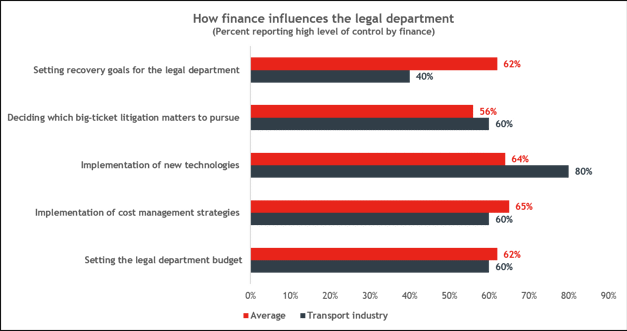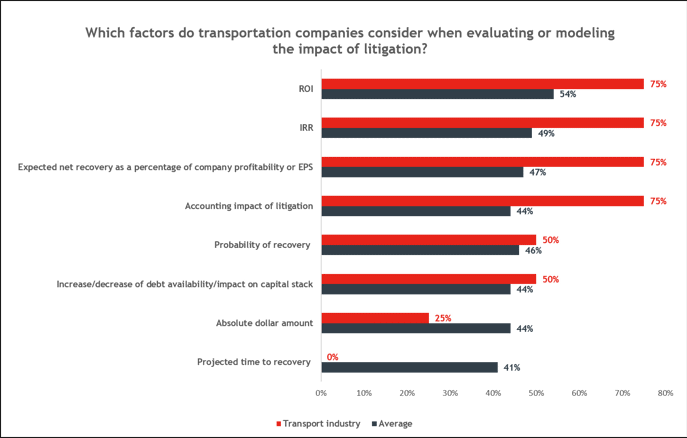The transportation sector is central to the evolution of a global marketplace. However, it is also highly litigious, given the complex nature of transporting goods across borders and constantly evolving legal and regulatory demands. Businesses operating in the international movement of goods or people are party to some of the most complex contracts and transactions in the corporate world—which can result in expensive and risky disputes. Goods may be delayed, damaged or lost. Shipowners may not be paid for freight or be entitled to demurrage. Airline operators may have disputes with suppliers over the quality of a product.
The international nature of transportation means that when disputes arise, they tend to be cross-border. Conflicting legal frameworks and business practices can make the resolution of disputes time-consuming and costly. But these claims also represent an opportunity to unlock value for the business and maximize returns to shareholders through the legal department.
Burford’s recent 2021 Legal Asset Report includes a transportation industry snapshot, which looks at how CFOs in the sector view their legal assets, manage costs and accelerate the value of pending claims. Below are some key takeaways:
Transport CFOs could access additional profits through extensive affirmative recovery programs
Just 40% of finance officers in the transportation sector reported extensive affirmative recovery programs—the lowest across all industries surveyed. Affirmative recovery programs are initiatives focused on generating capital by pursuing meritorious litigation to return money to the business. A 2014 paper in the MIT Sloan Management Review suggested that legal departments could become contributors to the company bottom line by creating tangible and identifiable value as opposed to cutting costs alone.
When companies’ affirmative recovery programs don’t meet their needs, they stand to miss opportunities to maximize legal asset value. The 2021 Legal Asset Report indicated that transportation companies routinely leave millions of dollars in unrecovered value on the table by not pursuing judgment enforcements, which suggests that companies in the transportation sector routinely neglect to enforce their claims and awards due to concerns about budget. This need not be the case: With legal finance, companies can use cost and risk shifting tools to pursue and enforce valuable claims with zero impact on budgets.
Transportation companies would benefit from greater collaboration between finance and legal

Litigation is inherently high-risk, and as companies make decisions about how best to manage the expense associated with their recovery efforts, they can and should draw upon a range of information inputs to make sound decisions. Therefore, the legal and finance departments should work together to set value-add goals alongside cost-control goals for the litigation department.
According to findings from the 2021 Legal Asset Report, financial officers in the transport industry exert relatively little influence over legal decision-making—particularly in relation to setting recovery goals. Only 40% of transport CFOs reported a high level of influence over the legal department in that regard compared with 62% of CFOs across industries. CFOs in the transport industry were also 26% less likely than their peers to say that legal departments should have commercial targets.
With greater collaboration between finance and legal leaders, companies can gain more value from their legal departments and encourage more commercial thinking about litigation.
Transport CFOs should count duration risk when evaluating the impact of litigation

The report also showed that CFOs in the transportation sector that model and assess the financial impact of litigation prioritize other factors, but surprisingly none considered projected time to recovery as a factor. Duration risk is among the most important factors in commercial disputes, given that litigation and arbitration claims take many years to resolve.
As the old business adage goes: Time is money. CFOs and GCs need to consider the impact of having working capital spent on litigation out the door for a potentially long period of time. According to Lex Machina, it takes on average two years for a commercial matter in the US to reach trial. For ICSID arbitrations the wait is even longer, taking on average 46 months to resolve and possibly another 13.3 months between the close of a final hearing and payment of an award.
Legal finance fixes the issue of duration risk by shifting that risk to a third party. It allows companies to enhance liquidity and control the timing of cash flows relating to their commercial dispute assets. Because capital is provided on a non-recourse basis, legal finance eliminates the claimant’s downside risk. The legal finance provider takes on that risk and repayment is contingent on a successful outcome.




